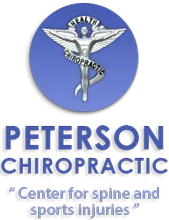In general most people pay close attention to auto maintenance. Whether the concern is tires, brakes, transmission, or windshield status, people make sure that their cars do what they need them to do. People count on their cars to perform effectively. No one wants a surprise, especially in a critical situation. But in stark contrast, people often give much less consideration to their own physical functioning and capacity than they do to several critical performance factors related to their own automobiles.
The metaphor of machine upkeep standing in for health maintenance is commonplace but apt. To prove the point, most of us allow our physical conditioning to deteriorate far beyond that which we would ever tolerate relative to our cars or even our power lawnmowers. The immediate consequences of such neglect are the developed world epidemic in diabetes, the United States–based epidemic in obesity, and the ongoing high levels of cardiovascular disease worldwide.
What redress is required with respect to our physical health and welfare? As with our cars, the long view is needed. If we lease a new car every year, upkeep is not an issue beyond an oil and filter change or two. But if we want our car to continue to perform reliably for three, five, or ten years, regularly scheduled service is necessary. Our cars need check-ups every 12 months or so. As flesh-and-blood organisms, we require a similar schedule of maintenance.
Importantly, feeling fine is not necessarily a good guide to how we're doing from a health perspective. High blood pressure, for example, is known as the "silent killer." There are no fully recognizable signs and symptoms of hypertension, until it's too late.1 By the time a person has had a debilitating heart attack or stroke, high blood pressure has probably been in place for years. Similarly, the early symptoms and signs of diabetes are subtle and seemingly harmless. Fatigue and an inability to focus may be ignored or interpreted as mere symptoms of an overly stressed lifestyle. Frequent thirst and frequent urination might be conveniently explained away as side effects of poor eating habits. Again, serious damage may be done, possibly involving one's kidneys and one's vision, as a result of undiagnosed and untreated diabetes.2
The solution to helping prevent such potentially serious health problems is to make sure you have regular check-ups. Operating on the long view, rather than operating as the proverbial ostrich (with his head buried in the sand) or the proverbial grasshopper (who fiddled all day), we will have annual or biannual blood pressure readings and blood tests. Appropriate scheduling for such check-ups will be specific to the individual, based upon age, past medical history, and family history. The critical takeaway is to practice preventive health care based on the long view.3 Perform personal maintenance and service checks as needed.
1Kumar N, et al: Management of patients with resistant hypertension: current treatment options. Integr Blood Press Control 6:139-151, 20132
2Adebayo O, Willis GC: Changing Face of Diabetes in America. Emerg Med Clin North Am 32(2):319-327, 2014
3Lynch EB, et al: A self-management intervention for african americans with comorbid diabetes and hypertension: a pilot randomized controlled trial. Prev Chronic Dis 2014 May 29;11:E90. doi: 10.5888/pcd11.130349
